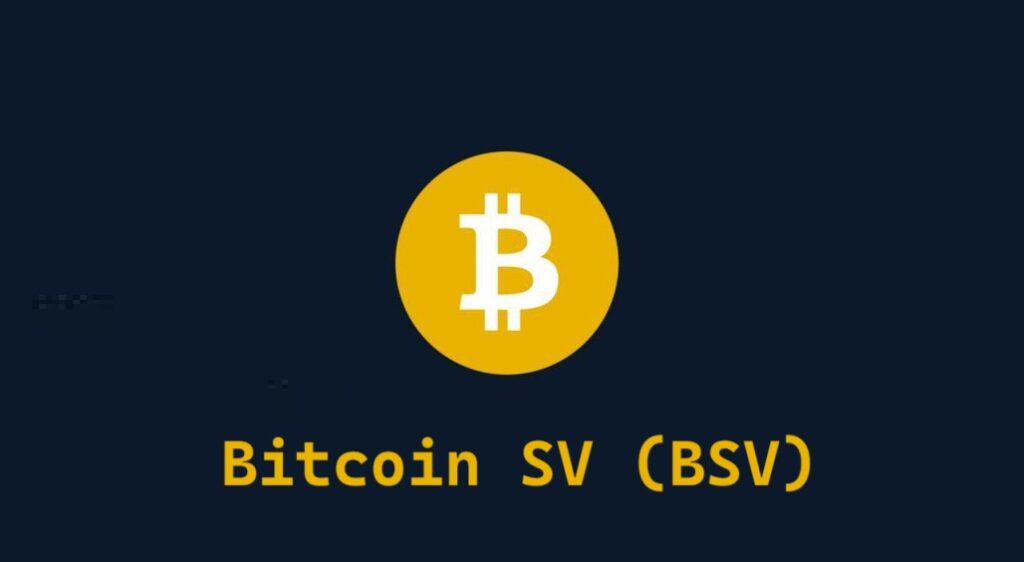Over the years, algorithmic trading has gained popularity as an efficient method for managing assets, especially in the cryptocurrency sector. SV (BSV) trading bots represent one of the most advanced tools in this area, enabling users to trade Bitcoin SV (BSV) with precision and speed. These automated bots make real-time trading decisions based on predefined strategies, reducing the need for constant human supervision.
Historically, automated trading systems have been used in traditional financial markets, but with advancements in blockchain technology, they’ve found a new home in cryptocurrency trading. The application of such bots to SV (BSV) opens up opportunities for traders looking to optimize their trading activities. Through automation, traders can mitigate risks, capitalize on market fluctuations, and reduce the emotional biases that often cloud decision-making. Follow Argoox to learn more about BSV bots.
What is the Role of Bitcoin SV (BSV) Trading Bots?
SV (BSV) trading bots are designed to automate the process of buying and selling Bitcoin SV on various exchanges. These bots are responsible for executing trades based on pre-programmed strategies that can range from simple rules like buy-low-sell-high to more complex algorithms involving technical indicators. The primary role of these bots is to make trading more efficient, allowing users to take advantage of price movements around the clock without needing to manually monitor the market.
SV (BSV) trading bots can also be used for portfolio management, market analysis, and executing trades in high-frequency trading strategies. By taking emotions out of trading, bots ensure that decisions are made logically, improving the chances of success in volatile markets.
How Do SV (BSV) Trading Bots Work?
SV (BSV) trading bots operate using a combination of algorithmic logic and real-time data analysis. The bot connects to a cryptocurrency exchange via an API, where it retrieves market data, analyzes trends, and executes trades. These bots are typically programmed to follow a strategy that could include technical analysis indicators such as moving averages, Bollinger Bands, or Relative Strength Index (RSI).
When certain market conditions are met, the bot will automatically execute buy or sell orders, depending on the strategy in place. Some bots are also equipped with machine learning capabilities that allow them to adapt and optimize strategies according to historical data and market trends.
Benefits of Using Bitcoin SV (BSV) Trading Bots
There are several advantages to using SV (BSV) trading bots, including:
- Efficiency: Bots can monitor and execute trades 24/7, ensuring no opportunity is missed.
- Emotion-free trading: Since the bot makes decisions based on predefined logic, it removes emotional biases such as fear and greed that often affect human traders.
- Speed: Bots can process data and then execute trades much faster than humans, ensuring that trades are made at optimal times.
- Customization: Most trading bots can be customized to fit specific trading strategies, allowing traders to fine-tune their approach to the market.
These benefits make SV (BSV) trading bots is a ideal option for both novice and experienced traders looking to streamline their operations.
Best Practices for Running SV (BSV) Trading Bots
To successfully run an SV (BSV) trading bot, it’s essential to follow some best practices:
- Test your strategy: Before deploying your bot, thoroughly test your trading strategy employing historical data or in a simulated condition to ensure it performs well under different market conditions.
- Monitor the bot: Even though bots automate the trading process, it is still important to monitor them periodically to make sure that they are working correctly and adjust strategies if needed.
- Start small: Initially, it is advisable to start with a smaller investment while you get familiar with the bot and refine your strategy.
- Regularly update the bot: Keep the bot up-to-date with the latest market trends and any software updates to ensure optimal performance.
Key Features to Consider in Making an SV (BSV) Trading Bot
When developing an SV (BSV) trading bot, some key features to focus on include:
- User-friendly interface: Even though the backend may be complex, the user interface should be easy to navigate for traders.
- Customization options: The bot should allow users to set custom parameters for strategies, risk management, and trade execution.
- Backtesting capabilities: Having a feature that allows users to test strategies on historical data helps refine performance.
- Security: Security features, such as encryption and two-factor authentication, should be integrated to protect user data and funds.
How to Make an SV (BSV) Trading Bot with Code?
Creating an Bitcoin SV (BSV) trading bot involves several steps, including setting up the trading logic, accessing the BSV market through APIs, and handling order execution. Below is a step-by-step guide on how to make a BSV trading bot with a sample code.
Steps to Create a BSV Trading Bot
- Choose a Programming Language: Python is commonly used because of its simplicity and availability of financial libraries.
- Set Up API Access: Choose an exchange that supports BSV trading and provides an API for accessing market data and placing orders (e.g., Binance, KuCoin, etc.).
- Install Required Libraries: Install essential Python libraries such as:
- CCXT for exchange API integration
- pandas for data analysis
- Numpy for numerical calculations
- Matplotlib for data visualization (optional)
pip install ccxt pandas numpy matplotlib- API Key and Secret: You’ll need your API key and secret from the exchange. Keep them secure and never expose them in public code repositories.
- Define the Trading Strategy: Define a basic strategy like moving average crossover, where the bot buys when the short-term moving average goes upper of the long-term average and sells when the opposite happens.
- Write the Code:
Here’s an example of a simple trading bot that connects to Binance (you can change the exchange to one that supports BSV):
import ccxt
import time
import pandas as pd
# Connect to the exchange
exchange = ccxt.binance({
'apiKey': 'YOUR_API_KEY',
'secret': 'YOUR_SECRET_KEY'
})
# Fetch OHLCV data for BSV/USDT
def fetch_bsv_data():
bars = exchange.fetch_ohlcv('BSV/USDT', timeframe='1m', limit=100)
df = pd.DataFrame(bars, columns=['timestamp', 'open', 'high', 'low', 'close', 'volume'])
df['timestamp'] = pd.to_datetime(df['timestamp'], unit='ms')
return df
# Define moving averages
def moving_average_strategy(df):
df['short_ma'] = df['close'].rolling(window=7).mean()
df['long_ma'] = df['close'].rolling(window=25).mean()
df['signal'] = 0.0
df['signal'][7:] = np.where(df['short_ma'][7:] > df['long_ma'][7:], 1.0, 0.0)
df['positions'] = df['signal'].diff()
return df
# Place a market order
def place_order(symbol, side, amount):
order = exchange.create_order(symbol, 'market', side, amount)
print(order)
# Trading logic
def run_trading_bot():
symbol = 'BSV/USDT'
amount = 0.01 # Define how much to trade
while True:
df = fetch_bsv_data()
df = moving_average_strategy(df)
# Check for buy signal
if df['positions'].iloc[-1] == 1:
print("Buy signal, placing order...")
place_order(symbol, 'buy', amount)
# Check for sell signal
elif df['positions'].iloc[-1] == -1:
print("Sell signal, placing order...")
place_order(symbol, 'sell', amount)
# Sleep before fetching new data
time.sleep(60)
# Run the bot
run_trading_bot()Explanation of Code
- fetch_bsv_data(): This function fetches the BSV/USDT market data using the exchange’s API. The data is stored in a pandas DataFrame.
- moving_average_strategy(): This function calculates the short-term and long-term moving averages, then determines buy or sell signals based on the crossover.
- place_order(): This function places a market order (buy or sell) based on the strategy.
- run_trading_bot(): The main function that runs continuously, fetching the latest data, checking signals, and placing orders when conditions are met.
Key Considerations
- Backtesting: Test the strategy on historical data before running it live to avoid potential losses.
- Risk Management: Set up stop-loss or other risk management techniques to protect your capital.
- API Rate Limits: Be mindful of the exchange’s rate limits when fetching data or placing orders.
- Security: Keep your API keys secure, and consider using environment variables or a separate config file for sensitive information.
Tools, Libraries, and Technologies Used
Several tools and technologies are commonly used when building SV (BSV) trading bots:
- Languages: Python, JavaScript, and C++ are popular choices for developing bots.
- APIs: Most exchanges offer APIs (like Binance or Bitfinex API) to allow bots to interact with the trading platform.
- Libraries: Python libraries such as CCXT for API integration, pandas for data handling, and TA-Lib for technical analysis.
- Machine Learning: Libraries like TensorFlow or Scikit-learn can be used to develop more sophisticated bots that adapt to market conditions.
Different Types of SV (BSV) Trading Bots
There are various types of SV (BSV) trading bots designed for different strategies:
- Arbitrage bots: These bots take advantage of price differences between exchanges, buying low on one exchange and selling high on another.
- Market-making bots: These bots place both buy and sell orders to make profit from the spread between them.
- Trend-following bots: These bots analyze market trends and execute trades based on directional movement.
- Scalping bots: These bots execute a high number of small trades to profit from minor price fluctuations.
Challenges in Building SV (BSV) Trading Bots
Developing an SV (BSV) trading bot comes with its challenges:
- Market volatility: Crypto markets are highly volatile, making it difficult to predict future price movements.
- Complexity in algorithms: Designing a robust trading algorithm that can adapt to various market conditions is not easy.
- Security risks: Trading bots require access to your funds, so it is essential to ensure the bot is secure to avoid hacks or unauthorized transactions.
Are SV (BSV) Trading Bots Safe to Use?
SV (BSV) trading bots are generally safe to use until proper security measures are taken. Users should only use bots from trusted developers, ensure API keys are stored securely, and use bots that offer two-factor authentication. Additionally, it’s wise to keep funds in separate accounts for trading and storage to reduce risk.
Is it Possible to Make a Profitable Trading Bot?
Yes, it is possible to create a profitable SV (BSV) trading bot, but profitability depends on several factors, such as the bot’s strategy, market conditions, and how well the bot is maintained. Regular monitoring and updates are key to keeping the bot profitable in the long run.
Conclusion
SV (BSV) trading bots offer a powerful way to automate trading and optimize strategies for buying and selling Bitcoin SV. With benefits like emotion-free trading, 24/7 market monitoring, and increased efficiency, these bots can be a valuable tool for both neophytes and experienced traders. However, building and managing these bots comes with its own set of difficulties, including market volatility and security concerns.
If you’re looking to enhance your cryptocurrency trading experience, consider exploring SV (BSV) trading bots offered by Argoox, a global leader in AI trading solutions. Visit Argoox to learn how you can automate your trading and make the most out of the cryptocurrency market.




